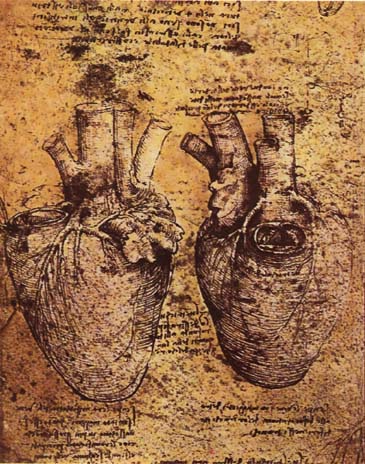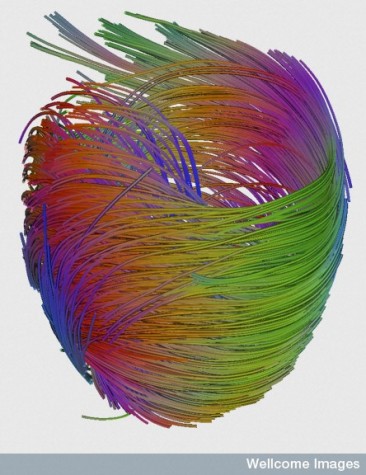This is the third post in Affair of the Heart, a series that takes place at the intersection of a highly-experienced science writer and the medical system.
by Colin Norman
 When my aortic aneurysm could no longer be ignored, and my cardiologist recommended a consultation with a specialist, I finally began to act like a science journalist.
When my aortic aneurysm could no longer be ignored, and my cardiologist recommended a consultation with a specialist, I finally began to act like a science journalist.
I scanned the literature and called medical experts and physician friends, who put out feelers to others in the medical profession. I got some reassuring responses: There are several excellent centers and surgeons who specialize in repairing diseases of the aorta. Among them is Duke Cameron, chief of cardiac surgery at Johns Hopkins University School of Medicine in Baltimore. Johns Hopkins is a national center for the study and treatment of Marfan syndrome, a genetic disorder characterized by, among other features, long limbs and a predisposition for aortic aneurysms. Duke Cameron has probably seen more aortic aneurysms than almost any other surgeon in the world. He sounded like the man for the job.
My wife Anne and I first met Dr. Cameron on a Saturday morning in April. He had had to cancel an appointment earlier in the week because he was sick, and came in on Saturday to see me and another patient in the otherwise empty cardiology offices. It was a good sign. A calm man with a reassuring demeanor, he certainly didn’t fit the stereotype of the swashbuckling heart surgeon. We liked him immediately.
 After viewing the MRI disc I brought with me (he already had my records), taking a family history, and listening to my heart, he went over the details of the condition and what I might expect. We discussed calculations by John Elefteriades at Yale, published a few years ago, indicating that the annual risk that a 4.9 centimeter aneurysm will rupture or lead to aortic dissection is 2% – 3%. If the aneurysm expands to 6 cm, the annual risk rises to about 7%. Given my family history, the size of the aneurysm, and the fact that I was in good physical shape, he recommended surgery to replace the damaged stretch of aorta.
After viewing the MRI disc I brought with me (he already had my records), taking a family history, and listening to my heart, he went over the details of the condition and what I might expect. We discussed calculations by John Elefteriades at Yale, published a few years ago, indicating that the annual risk that a 4.9 centimeter aneurysm will rupture or lead to aortic dissection is 2% – 3%. If the aneurysm expands to 6 cm, the annual risk rises to about 7%. Given my family history, the size of the aneurysm, and the fact that I was in good physical shape, he recommended surgery to replace the damaged stretch of aorta.
Dr. Cameron brought with him a length of tubing made of woven Dacron, a polyester fiber, that looked like a miniature version of an Ace knee support. This is what he would use to replace the damaged aorta. The inevitable question: How long would it last? Much longer than I can expect to live. Grafts like this have been used for decades with almost no cases of failure of the material itself. It’s inert and not made of foreign tissue, so the body doesn’t reject it, and blood cells don’t adhere to the Dacron fiber, reducing the risk of blood clots. Strange, though, to think of a piece of woven polyester sitting at the critical juncture between my heart and the rest of my circulatory system.
The operation isn’t as simple as snipping out the piece of aorta that includes the aneurysm and sewing in the Dacron tube. Because my aneurysm is right at the root of the aorta, the surgery would involve the left ventricle itself. A critical question is whether the aortic valve, which stops blood from flowing back into the heart when the ventricle refills, would need to be replaced. In some cases, the aneurysm will cause the aortic valve to leak, or the valve is malformed or damaged. (My father had an aortic valve murmur for years, another indication that he may have had an undiagnosed aneurysm.) And until the 1990s, surgery for aortic root aneurysms always included replacing the valve with either a mechanical valve or a valve made of tissue from a pig or a cow, along with the Dacron graft. That began to change in the 1990s, thanks largely to Dr. Tirone David, a native of Brazil who is a professor at the University of Toronto and head of cardiovascular surgery at Toronto General Hospital.
Dr. David pioneered a surgical technique that preserves the patient’s aortic valve during aortic root replacement. It’s technically more demanding than replacing the valve and the diseased stretch of aorta with a combination valve and Dacron graft. But for patients whose aortic valve isn’t already compromised, it has some advantages. Pig or cow valves have a lifetime of 10 to 20 years, so when implanted in a young person they are likely to require replacement at some point. And while mechanical valves are expected to outlast the patient, they carry an increased risk of causing blood clots to form, so the patient has to be on anticoagulation medication the rest of his or her life.
My aortic valve seemed to be functioning well, so I would be a candidate for the valve-sparing technique. But it would be less demanding surgery to replace the valve and aortic root together. I’d prefer not to have a mechanical valve—that’s what my brother has, and while the valve continues to work flawlessly, he’s had a hard time with the anticoagulation medication. As for a valve made of pig or cow tissue, at my age it may well outlast me, but there’s a chance I would need a replacement, possibly when I’m in my 80s.
Dr. Cameron’s recommendation was to go in expecting to do the valve-sparing procedure, and if for any reason the combination replacement seemed the better course, he would put in a cow-tissue valve. (If you are not too squeamish, a video of the valve-sparing procedure is here.) We discussed late summer or early fall as a possible time for the surgery.
After another high-resolution image, called a CT angiogram, was taken of my heart and aorta, my rendezvous with the scalpel was set for September 8.
In the meantime, life went on normally. I had no symptoms, and my only restrictions were not to lift heavy weights, avoid contact sports, and keep my blood pressure down.
My failure to monitor the progress of my aortic aneurysm over the years has meant that I never worried about it. It was far in the back of my mind, and I didn’t live under even the slightest shadow of dire consequences from the stresses of a job I loved or the exhilaration of a hard run. But it’s not a strategy I would recommend. It could easily have ended with a tearing sensation in my chest, a searing pain, and an emergency trip to the hospital—if I were lucky.
§
This is the third in a series. The fourth comes next Monday, 10/27: A Day of Reckoning
_______
Colin Norman has been a science journalist for more than 40 years. He is the former news editor for Science magazine and currently lives in Lewes, Delaware.
_______
Photos: heart and blood vessels by Leonardo da Vinci — Art Renewal Center via Wikimedia Commons; Heartstrings, an image showing the swirling arrangement of cardiac fibres in the left ventricle, produced using a branch of magnetic resonance imaging (MRI) called diffusion tensor imaging (DTI) — University of Oxford, Dr P.Hales/BBSRC, via the superb collection at Wellcome Images